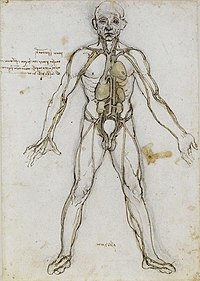
Photo from wikipedia
Robust protocols for genetic manipulation are highly needed to facilitate study of gene function in human B cells, both in settings of health and disease. B cells are notoriously hard… Click to show full abstract
Robust protocols for genetic manipulation are highly needed to facilitate study of gene function in human B cells, both in settings of health and disease. B cells are notoriously hard to manipulate, being especially fragile in resting state, which makes it challenging to modulate their endogenous gene expression or to induce overexpression of transgenes. Human B cells could be manipulated by using viral vectors; however, this procedure has several drawbacks. First, efficient transduc-tion requires B-cell pre-activation in vitro for several days [1]. This would exclude the advantage of manipulating resting B cells, leading to a missed opportunity of performing straightforward dissection of gene function in B-cell activation, proliferation, and differentiation. Second, the procedure may yield suboptimal results due to poor overexpression of large pro-teins by primary B cells (e.g., 4.1 kB long Cas9 ). Third, scaling up viral transduc-tion screens to multiple genes requires advanced molecular biology skills and access to the next-generation sequenc-ing facilities, which may not be readily accessed at all research institutes. these obstacles, robust methods of manipulation based on the electroporation of resting human B cells the potential to significantly accel-erate B-cell research. In this work, we set up protocols for high-throughput mRNA-driven transgene and CRISPR/Cas9-based gene primary human B cells from healthy hematological patients. mRNA a nontoxic alterna-tive plasmid transfection fragile Electroporation of ribonucleopro-tein (RNP) complexes recom-binant purified Cas9
Journal Title: European Journal of Immunology
Year Published: 2022
Link to full text (if available)
Share on Social Media: Sign Up to like & get
recommendations!